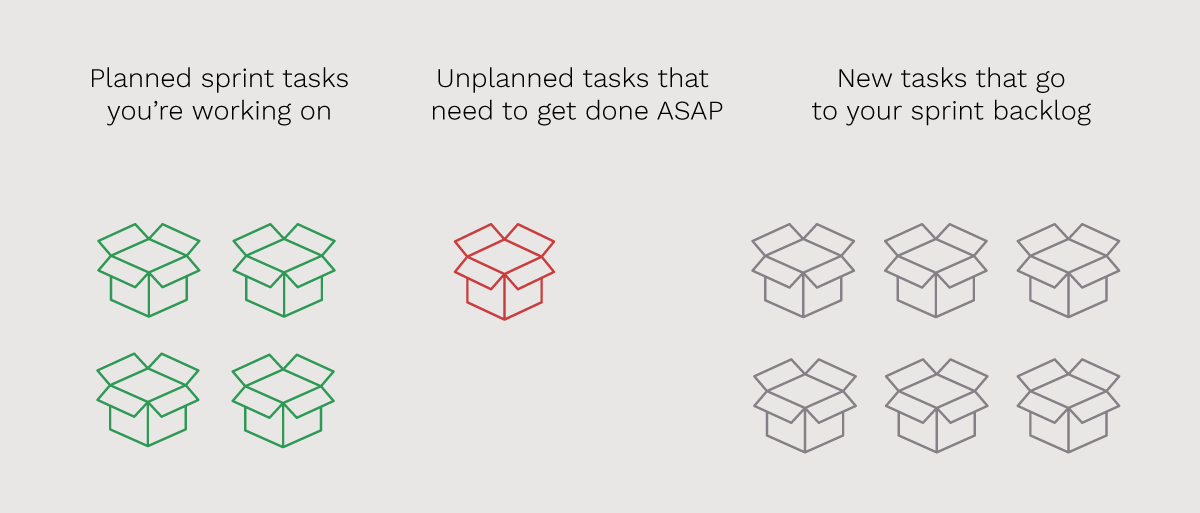The Complete Guide to Winning Project Management Sprints
Project management sprints are in many regards similar to their real-life counterparts. You can either pass the finish line and beat the competition, or you might stumble on the way and be left without the trophy.
But one thing for sure: A well-planned sprint can go a long way in helping you reach ambitious goals at a faster pace. They also keep your team focused on what’s important and help to take your teamwork to the next level.
The benefits of project management sprints include:
- Getting more work done
- Having a clearer project roadmap
- Better coordination between the team members
- Tangible goals and results
Oh, and did we mention that project sprints help to avoid the unexpected “surprises” such as a new customer request or a distracting task in the middle of the planned workflow? And surprises like that hit us every day.
By applying the sprint mindset to both small and large projects, you’ll avoid getting overwhelmed by too many tasks. Sounds promising, doesn’t it? So how can you get started with project management sprints and get your team onboard to test the new tactic?
Start by mapping out and communicating the sprint’s benefits to each team member. Then follow the best practices to make every single project sprint a notable success.
How companies use sprints in daily work
You’ve likely heard about Zappos, the multi-billion retail company. It turns out they are one of the greatest advocates of the sprint method. So much so, that many of their new feature launches are preceded by a handful of 1-week project sprints.
Zappos Labs, a small R&D arm of the online retailer, uses 1-week sprints to bring more structure to their work. In their weekly sprint, a team commits to finishing a set amount of work within a single week. After an initial planning meeting at the beginning of the week, there are daily 5- to 10-minute standing meetings, where the team quickly discusses what they’re working on and what to do next.
Google Ventures has helped hundreds of companies use weekly sprints to find answers to burning business questions.
For the podcast startup Gimlet Media, an abstract question — “Should we become a technology company?” — was causing anxiety for founders Alex Blumberg and Matt Lieber. They decided to run a sprint on the question, and almost immediately had an answer.
Read on: Stop Making These Project Management Mistakes
All in all, sprints help teams to better prioritize their work and understand what needs to get done. This means fewer resources spent and assigning less importance to the tasks with a low return on investment.
Getting started with your first project sprint
When planning for the first project sprint, many teams are put off by a set of questions that immediately arise:
- What’s the right length for our sprint?
- How to conduct the first sprint meeting?
- How should we measure the results?
We’re going to answer all these questions in the upcoming paragraphs. But first, let’s talk about the first steps you need to take towards having a successful project sprint.
1. Determine your sprint goal
Most sprints focus around a single goal that’s divided into several objectives and deliverables. And your initial sprint meeting is where you lay the foundation for the weeks to come. Gather together your team and set one unanimous goal for the upcoming weeks – what’s the big task that needs to be completed? Next, think about what exactly needs to be done in order to achieve your goal.
Read on: 19 Ideas for Setting and Reaching Your Goals With OKR-s
2. Specify the tasks and deliverables
In this phase of your sprint meeting, it’s time to be as clear as possible about what exactly needs to get done throughout the sprint period – how will you reach your goal? To specify the tasks that need to get done, follow this process:
- Together with your team, create a list of all the tasks you need to complete
- Evaluate how much time each of them will take
- Assign a responsible person for each task.
You can also leave some tasks unassigned so that the team member that completes their assigned work first can tackle some extra tasks. Consider that you cannot add additional tasks to the sprint once you’ve confirmed the plan. The tasks that pop up in the middle of the sprint will be added into the backlog and addressed in upcoming sprints.
Think about your tasks as three boxes: the planned sprint tasks, the tasks that appear in the middle of the sprint and really need to get done ASAP, and the backlog for upcoming sprints.

Your completed sprint plan should represent a prioritized list of what the company and every team member believes are the most important things to be built in the upcoming weeks.
Read on: 7 Stories That Prove The Importance Of Teamwork
3. Set up the sprint timeline
If you’re planning a 2-week or longer sprint, it helps to establish some milestones and metrics to evaluate the process up to a certain point. For example, the team over at Zappos Labs organizes daily 5- to 10-minute “scrums,” or standing meetings to review their sprint process and decide what to do next.
It’s important to also establish a clear meeting agenda and blueprint to avoid getting caught up in lengthy meetings. After all, 56% of team workers feel overwhelmed due to lack of planning and changing priorities. This is how your sprint timeline could look like:

Read on: 10 Hacks For Never Missing a Single Deadline
4. Establish a sprint board
Once you’ve agreed on the timeline and the tasks to be done, you should add it all on a sprint board. Sprint boards are usually Kanban-style boards that signify several project stages: planned, in process, in review, completed. Every team member can move the tasks between the stages to mark their work process.
The extent of information you need on your sprint board depends on many aspects, such as your goals and the size of your team. Here’s a list of things you might want to add:
- Sprint stages to mark the process
- Planned time per each task
- People who are assigned to the task
In addition to the sprint board, you should also record important information such as:
- Sprint goals
- Success metrics
- Sprint budget
- Meeting agendas and notes
- Ensuring your project sprints succeed
Now that you’ve set up a project management roadmap for the upcoming weeks, it’s time to get started with the work. The key to successful project sprints is to be rigorously focused on following the plan. Even the slightest alterations to your roadmap can push the entire sprint wagon aside from the track.
How to assure sprint success
While managing projects in Scoro, we’ve noticed that a few key tactics help to significantly reduce the sprints’ fail rate.
Best practice #1: Keep a backlog of tasks
Your sprint backlog is where you add the tasks that are not part of the current sprint but need to get done in the future. No matter what critical tasks pop up in the middle of a sprint, you should try to postpone these until the next sprint period.
Senior Product Manager at Zappos Labs, Adam Goldstein explains:
“One thing we try to keep very sacred is that if there is a production critical issue that comes up during a sprint, the work that the team agreed to do is still what they do. We don’t change direction on Wednesday just because someone says something. It’s two days until a new sprint. “
Best practice #2: Keep your sprints short
One thing many sprint owners notice is that most of the work tends to get done in the last quarter of the sprint. Often, a 1-month sprint worth of work could be done in 2 weeks when planned properly.
Getting work done faster assumes that you’re able to remove all the bottlenecks in your teamwork and have the project timeline aligned with task dependencies. We recommend that you first start out with 2-week project management sprints – that’s enough time to get lots of work done, but short enough to have new upcoming tasks postponed until the next sprint.
Best practice #3: Trust your team
While it’s tempting to keep your hand on the pulse as a manager, your core job is to plan bulletproof sprints that never run off the course.
If you succeed in establishing clear sprint goals and key metrics, there’s no need to be concerned about the Hows of your team’s work. Every team member should have the full responsibility to implement the tasks when and how they see fit.
Best practice #4: Organize daily stand-ups
The reason we recommend having stand-up meetings compared to their more traditional alternatives is that standing up makes people more focused and helps to keep your meetings shorter.
Quick 10-minute sprint reviews can be held every day or once a week, depending on the duration of your project sprint.
During these meetings, each team member can give a brief overview of what they’ve been up to, and mention their concerns should there be any. Just to keep things running smoothly and as planned.
Best practice #5: Conclude your sprints with a review
After every sprint, take at least 30 minutes to conclude what worked and what didn’t. The sprint review could be a part of your next project sprint’s planning meeting to walk through the past weeks’ achievements and draw insights to improve your next sprint.
The sprint review meeting is intentionally kept very informal, typically with no presentations to keep it brief and concise. Each team member will present their completed work and will address any questions or ideas they might have.
The project manager should also draw attention to the key metrics and goals and see whether the team met their sprint objectives.
After you’ve concluded the past weeks’ sprint, it’s time to start planning for the upcoming weeks. Dig into your project backlog, define your key objectives, and sprint away.



